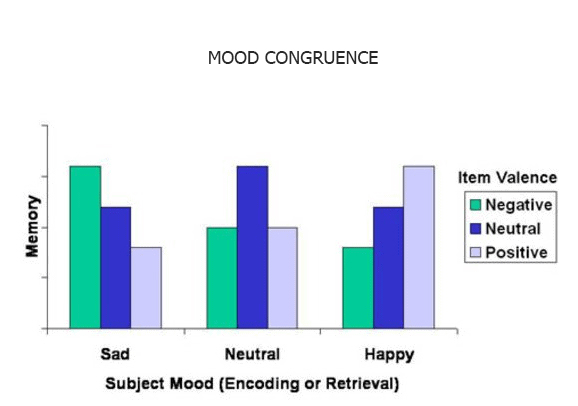Mood congruence is a cognitive bias that occurs when individuals process information and make judgments that are influenced by their current emotional state. People tend to perceive and remember information in a way that aligns with their emotional mood at the time, which can lead to biased judgments and decision-making.
Explanations:
Mood congruence is closely tied to the idea that emotions can color an individual’s perception of the world. When people experience a particular emotion, their thinking and judgment tend to be influenced by that emotion, making them more likely to notice and remember things that match their current mood.
Examples:
Sadness: When feeling sad, individuals may be more likely to recall and focus on negative or sad events in their past, even if there were positive moments as well.
Happiness: A person in a good mood may be more likely to see the positive side of a situation and overlook potential drawbacks.
Anxiety: When anxious, individuals might be more likely to perceive potential threats in their environment, even if there is no objective danger.
Solutions:
Emotional Awareness: Practice emotional self-awareness to recognize how your current mood may be influencing your perceptions and judgments.
Objective Evaluation: When making decisions or judgments, try to evaluate the situation from a more objective standpoint rather than being solely guided by your emotional state.
Emotional Regulation: Develop strategies for regulating your emotions when necessary to make decisions and judgments more impartially.
Diverse Input: Seek input from others, especially when your mood might be biasing your judgment, to gain a more balanced perspective.
Addressing mood congruence involves recognizing the impact of one’s emotional state on decision-making and actively working to mitigate this bias by considering information from a more objective standpoint.
